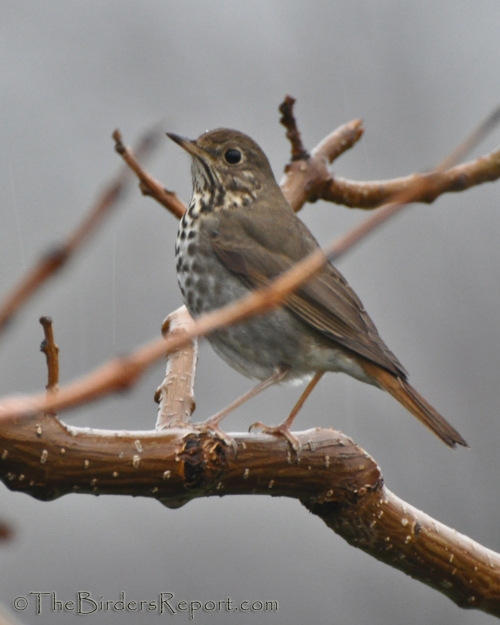 Hermit Thrush photos by Larry Jordan
Hermit Thrush photos by Larry Jordan
Enjoying the cold and rainy day off today, I decided it would be a great day to record some backyard birds for Project FeederWatch. If you haven’t heard, Project FeederWatch is a winter-long survey of birds that visit feeders at backyards, nature centers, community areas, and other locales in North America, operated by Cornell Lab of Ornithology and Bird Studies Lab of Canada.
When I walked out onto my back porch, there were birds everywhere. The Hermit Thrush shown above was actually one of the last species I found, rummaging around in my photinia bush. It was being chased out every so often by an American Robin that apparently claimed ownership of said bush and its berries.
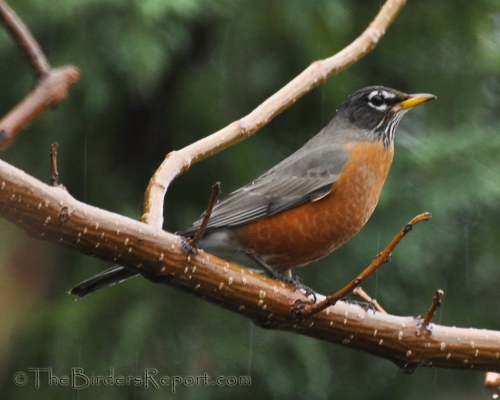
They were joined by several other species that enjoyed the cover of the almost tree sized bush. The Spotted Towhees were foraging on the ground for the most part but they would fly up into the bush and adjacent Sapphire Dragon Tree where this one decided to sing for me.
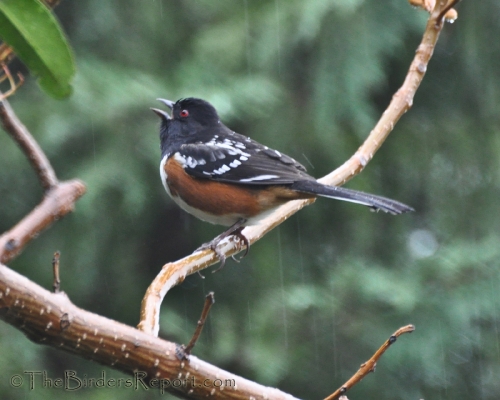
Over at the “feed station” is where most of the action was taking place. There were Western Scrub-Jays yac, yac, yackin as they flew in to disrupt the House Finches at the platform and tube feeders.
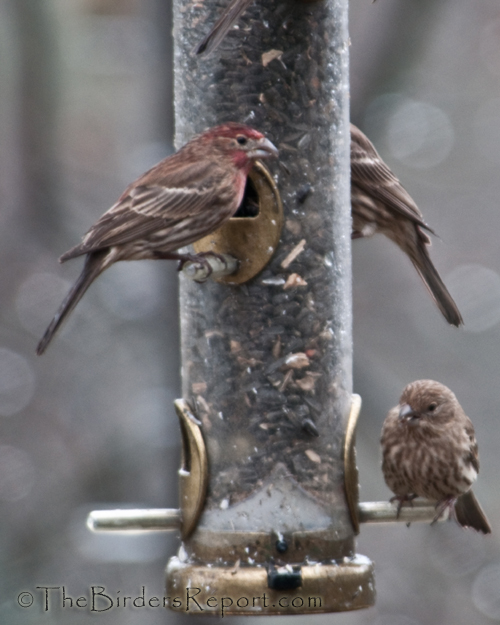 Aspects Large Antique Brass Tube Feeder
Aspects Large Antique Brass Tube Feeder
There were over forty Dark-eyed Juncos foraging under the sunflower seed feeders and making trips to the hanging platform feeder. Occasionally they would sneak some suet from one of the easy to reach suet feeders, stopping to perch on the same branch the Oak Titmouse uses to access the suet block.
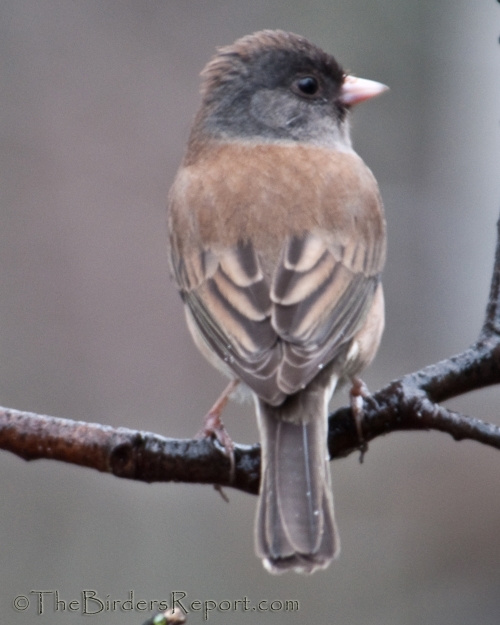
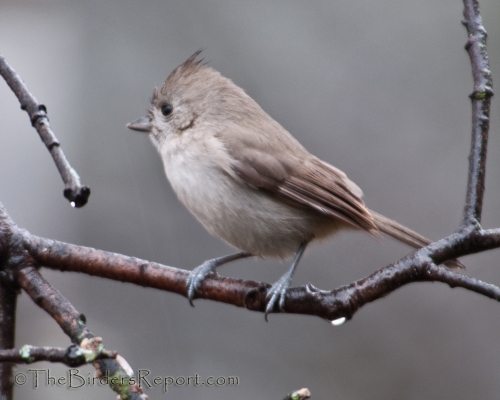
One of the male Anna’s Hummingbirds that has stayed here all winter was perched just above these suet eaters, diligently watching this way and that, making sure none of the other hummingbirds around drew nectar out if his feeder.
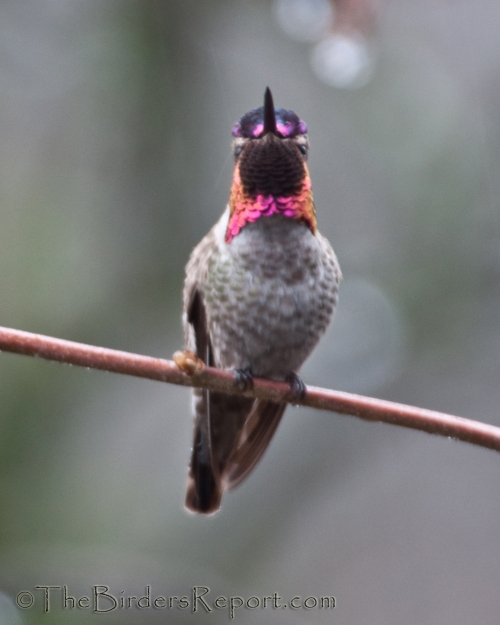
Right behind all this activity were the American Goldfinches and Lesser Goldfinches vying for the best spots on the thistle feeder.
Notice the difference in the markings of these two species that are just beginning to acquire their spring plumage. The American Goldfinch in the middle of the photo is brownish on the back with a light breast, yellow throat and a solid conspicuous wing bar. It also has a white rump and is larger than the dark rumped Lesser Goldfinches above it.
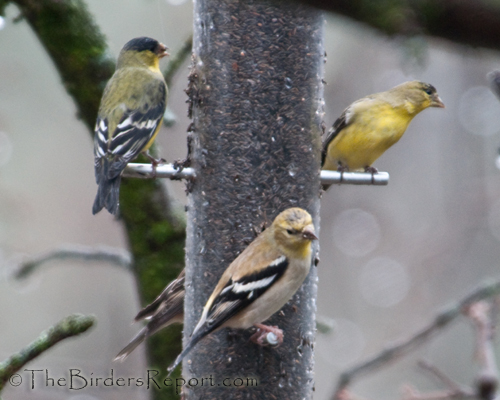 36 inch Yellow Metal Thistle Feeder
36 inch Yellow Metal Thistle Feeder
The White-breasted Nuthatches that I’m pretty sure will be breeding here this year, were visiting their two favorite feeders, the upside down suet feeder …
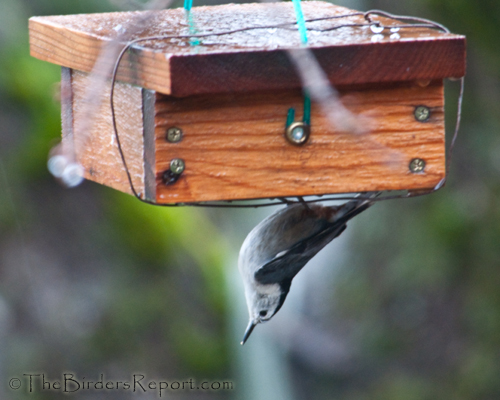
and the ultimate woodpecker feeder which was also being visited by this Nuttall’s Woodpecker.
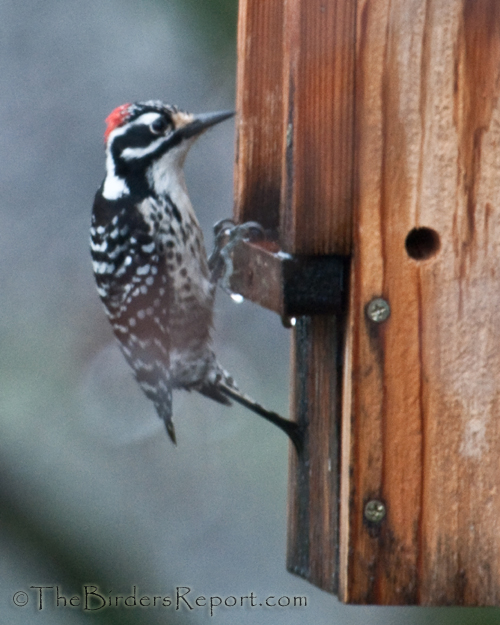
It was a fun feederwatch day, spotting fourteen species that actually came to the yard in search of food. The most exciting thing for me, and the last bird on my list was a new visitor to my yard.
Brigitte and I have been watching and hearing a pair of Red-shouldered Hawks nearby since last summer but I have yet to find their nest site. This morning we had a visit from one of our local Red-shouldered Hawks and Brigitte got a picture of it through the living room window. It was perched right above one of the sunflower seed feeders. The first Red-shouldered Hawk to perch in our yard! How cool is that?
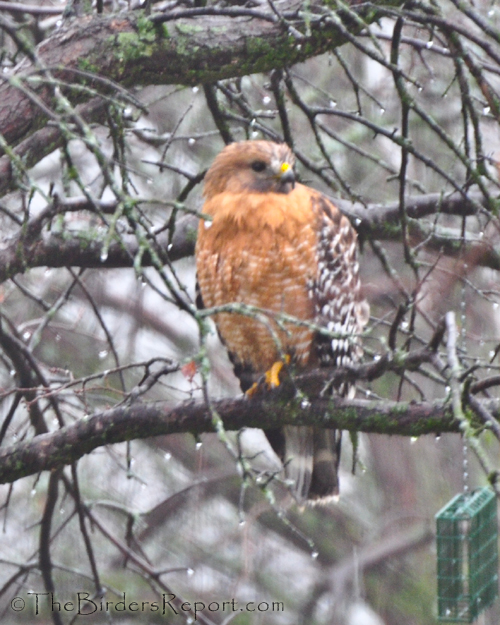
Make sure to check out all the other great bird photos at Bird Photography Weekly! And if you want to see other sights, all over the world, check out MyWorld!
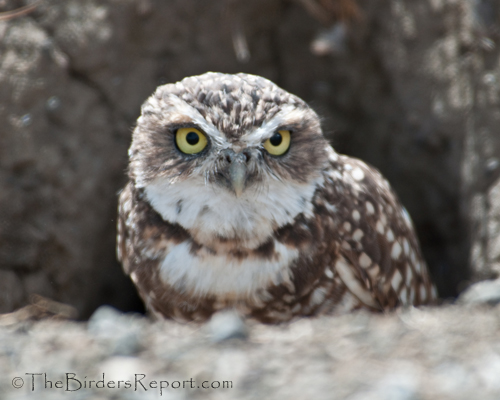 Burrowing Owl photo by Larry Jordan
Burrowing Owl photo by Larry Jordan
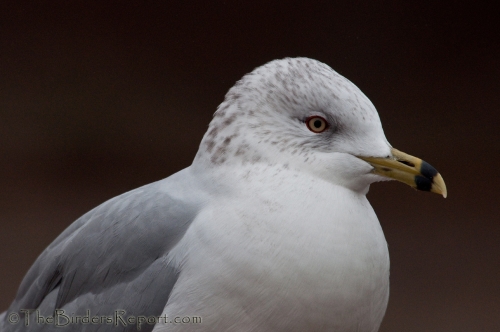
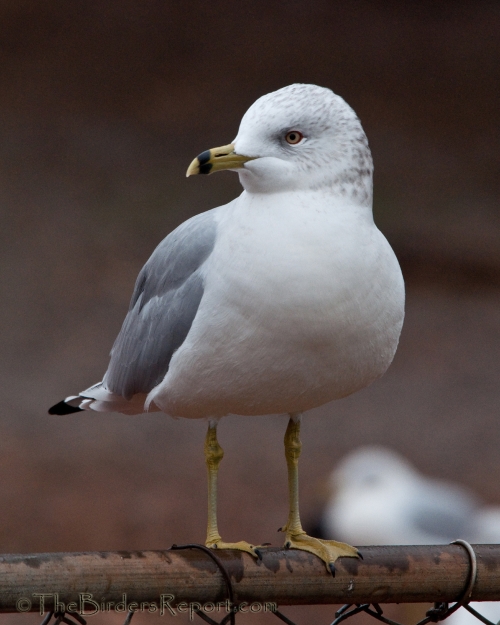
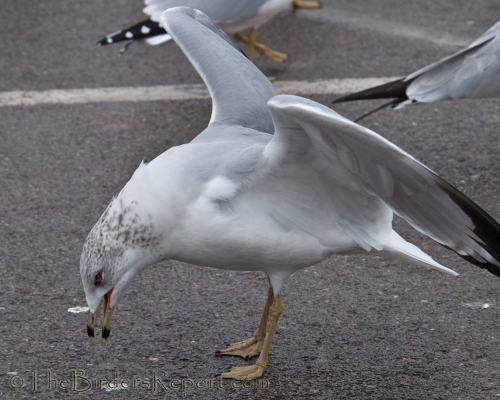
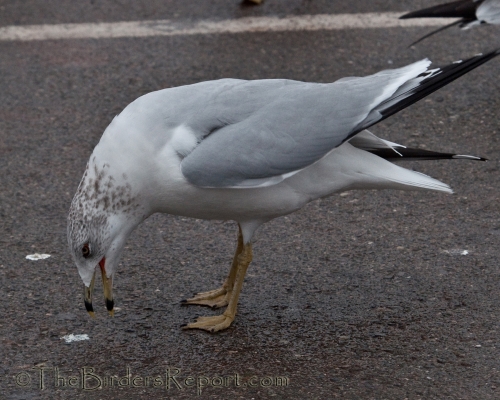
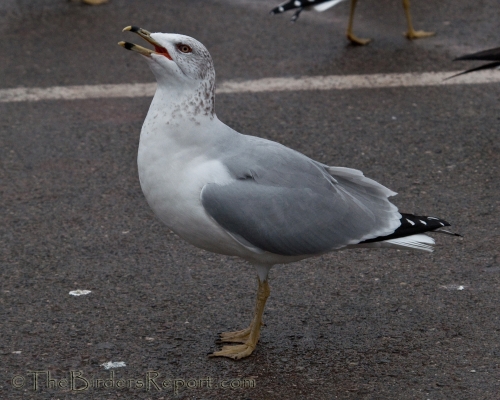
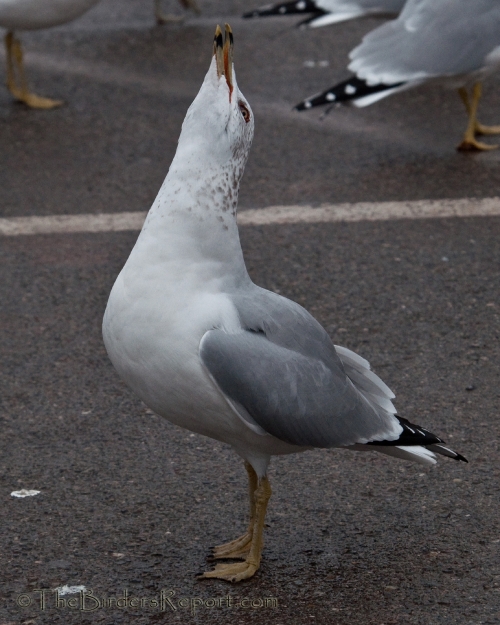
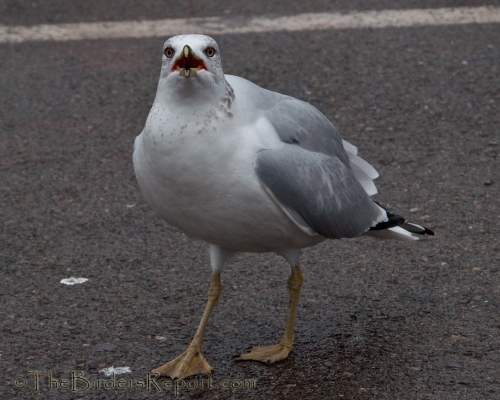
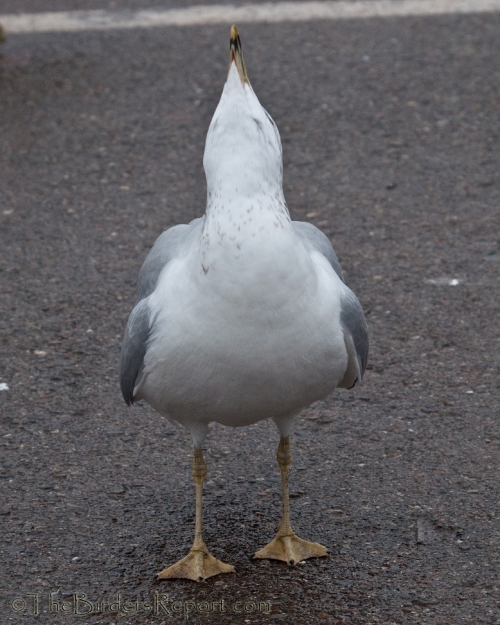
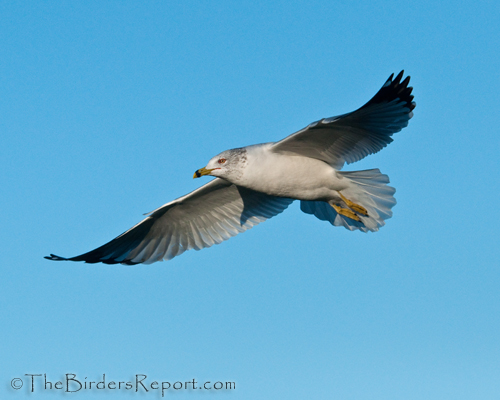
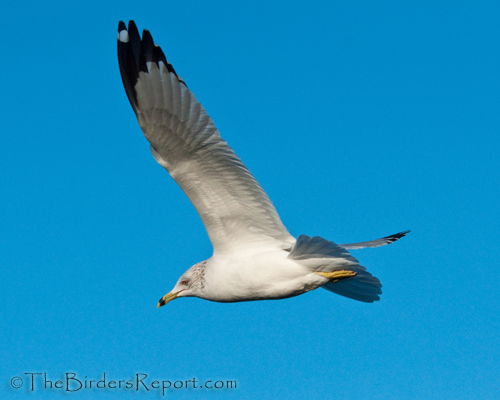
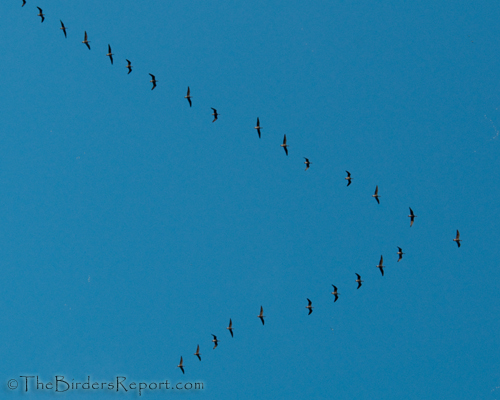 Geese Flying Overhead in “V” Formation photos by Larry Jordan
Geese Flying Overhead in “V” Formation photos by Larry Jordan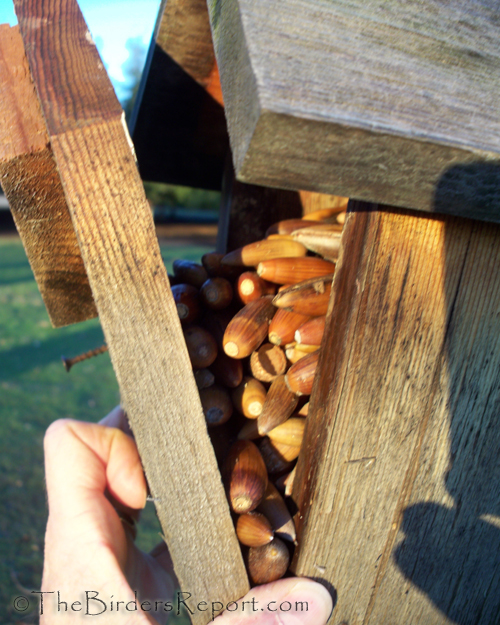
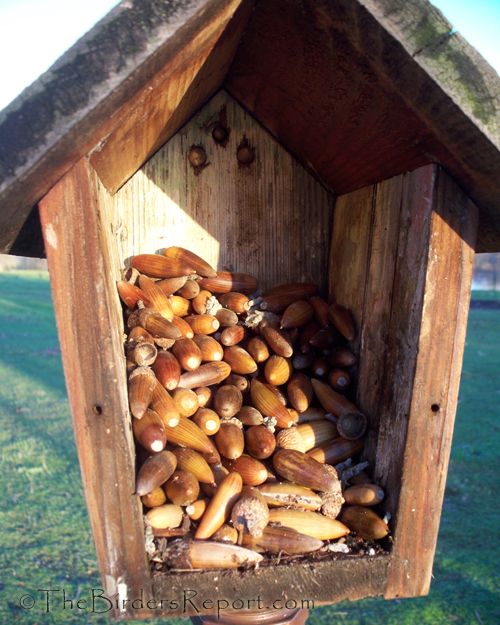 I found a couple of nest boxes full of acorns this week
I found a couple of nest boxes full of acorns this week













Social Media Connect